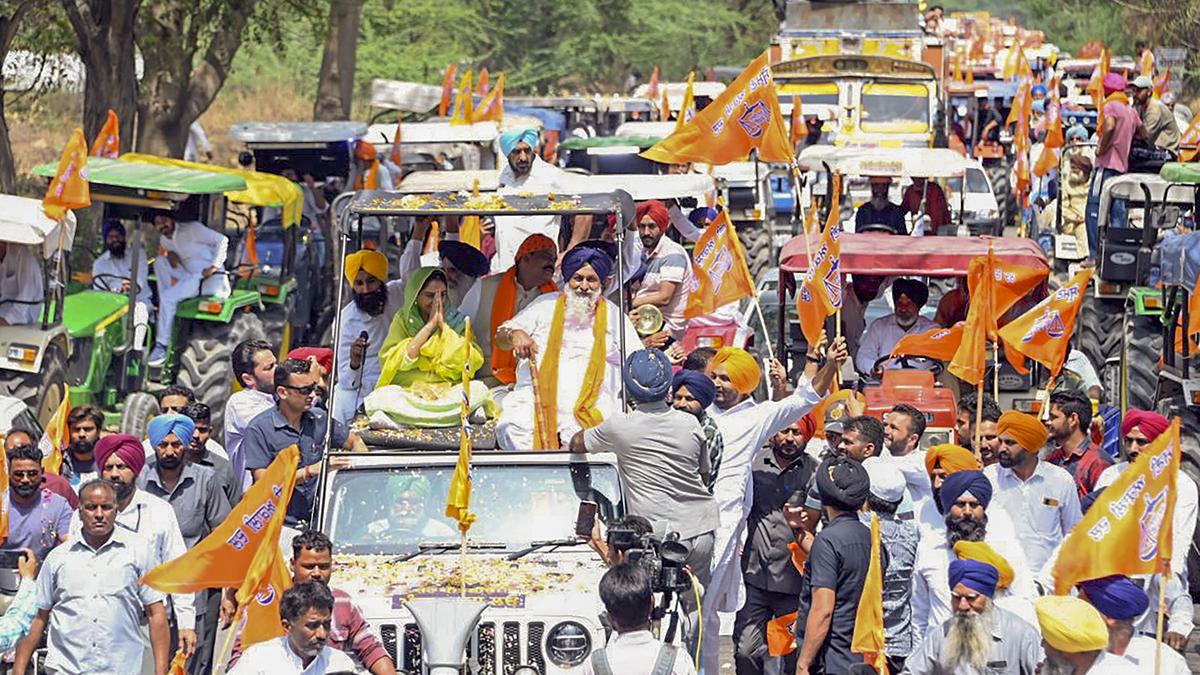The prevailing drought has brought acute distress upon coconut farmers in Karnataka, who were already affected by the falling price of copra. They are now anxious about saving their coconut plantations as water scarcity has led to crop wilting in Tumakuru and Chitradurga districts.
While the delay in purchase of copra by NAFED has already hit them, the drying up of borewells in large tracts has forced them to purchase water to save their plantations. Though the Janata Dal (Secular) and Congress members raised the problems being faced of coconut farmers during the legislature session in February 2024, it is not spoken of much as an election issue, though copra procurement is connected to the Centre.
Delay and loss
“The delay in copra procurement has caused loss to us. The extreme heat has reduced the weight of copra. For about 1,000 coconuts, we would get upwards of 140 kg of copra, which has now reduced to 120 kg,” said Renukaswamy of Muguluru-Mayasandra in Tumakuru district, who had brought his produce to a rice mill that has been converted to a copra procurement centre. “Traders and middlemen were responsible for botching up the earlier procurement process, by registering a huge number of fake farmers, that led to its cancellation. Prices had crashed to less than ₹7,500 per quintal from about ₹15,000 a quintal in 2023.”
Maheshwaraiah, a farmer in Belgarahalli in Tiptur, said that though ground water is available in some places, they do not have money to sink borewells. “We are yet to sell our stock of copra and do not have money. Some who took loans and sank borewells are facing loss as those wells failed. Without water, the coconut palm is wilting.”

A farmer peeling copra from the shell at Tiptur, in Tumakuru district of Karnataka. | Photo Credit: K BHAGYA PRAKASH
After a failed procurement attempt, the NAFED has decided to procure 70,000 tonnes of copra from Karnataka at a price of ₹12,000 per quintal while the State Government is offering ₹1,500 per quintal. Normally, copra procurement begins by December and January, but this year, it started on April 1, and is likely to go on for the next six months in several centres.
To prevent a rush, each centre will collect 200 quintals daily. Farmers have been allotted time. A cap of 15 quintals per farmer has been fixed this year against 20 quintals last year. In Karnataka, about 58,000 farmers have registered to avail the support price. Karnataka is the largest supplier of edible copra in India , and is in demand for its sweetness.
Manipulation of copra price by traders in APMC rates
“The prices dropped this year due to a glut and manipulation by traders in the APMC rates. Traders bid for low price in APMC, which became a standard price outside too. This issue has been fixed. Farmers in Tumakuru, Hassan and Chitradurga that fall under dry land agriculture have no alternative to arecanut,” said Tiptur APMC Secretary S.B. Nyamgoud. Though the price of copra in the open market is ₹9,300 per quintal, it is likely to go beyond ₹10,000 per quintal in the coming days.
If the falling price of copra has given sleepless nights to farmers, the long dry spell and water scarcity has hit them hard in these summer months.
“We are running out of savings as we are spending more than ₹1,000 per water tanker to save our crops. The cost of a tanker varies from ₹900 per load to ₹1,600 per load depending on the distance from the source of water. I am buying tanker every alternative day. The drought relief of ₹2,000 given by the State Government is nothing when compared to our expenses,” said Ranganatha, who has two-and-a-half acres in Anesiddre Gollarahatti in Hiriyur, Chitradurga district.
At Baramagiri, Kanthraj, another farmer, said, “In 2015-2016, we lost our plantations due to drought. Now, we are on the verge of losing it again if it does not rain soon. It is very expensive to purchase water for irrigation.”

 1 week ago
105
1 week ago
105



